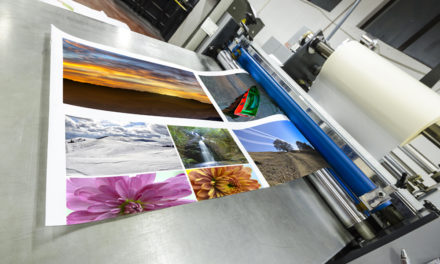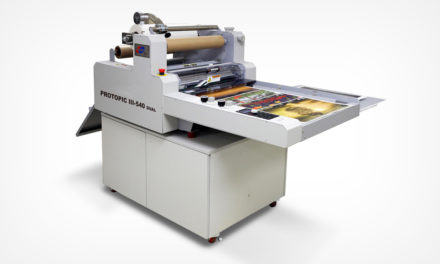When purchasing a two-sided laminating machine, one important consideration is the type of heating system.
Many two-sided laminators utilize a Teflon-coated platen heating system, known in the industry as “heat shoes”. This is typically an electrically-heated cylinder-shaped “shoe” with a heating element inside. Laminating film is pulled across these heated areas, at a temperature between 220°F to 300°F, which allows the melting of the adhesive — typically known as EVA (ethyl vinyl acetate) — on most common polyester laminate films. Since there is a small gap between the heat source (the shoe) and the bond point (called the nip rollers, which are the first set of rollers in a laminating machine), adhesion problems can occur if the film is run too slowly, allowing it to cool somewhat before reaching the bonding point in the nip rollers.
Heat-shoe laminators are more common, but the fact that film is pulled or dragged across a static heat shoe means that some scratching and marking can occur, often more noticeable on thicker (5 and 10 mil) polyester films.
Heated-roller laminators, in contrast, utilize a heating element which is imbedded in the center of the two nip rollers. This means that film is heated as it comes around the nip rollers, and remains heated at the set temperature at the point of substrate bonding. Heated-roller laminators typically offer a slightly better bond than heat-shoe laminators, which in many cases is not critical or noticeable. However, heated-roller laminating will often increase bond strength on digital prints, as the additional heat seems to ameliorate some of the toners and fuser oils common to many digital printing engines.
Pre-Heating Technology – A New Breakthrough Coming Shortly to the American Market
One new breakthrough coming shortly to the American market is a “pre-heating” technology. Developed by Komfi®, a leading European laminating system manufacturer, it allows the sheet to be heated ahead of bonding, and increases bond strength to difficult toner-based prints without using expensive digital laminate films, significantly reducing costs.





